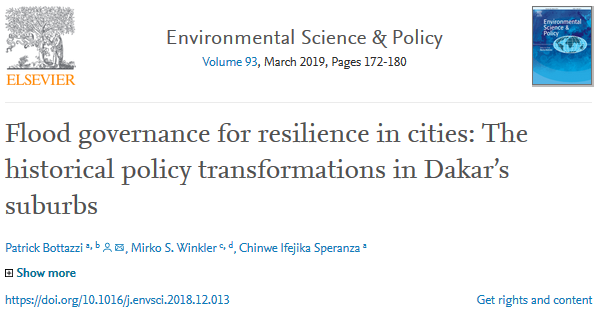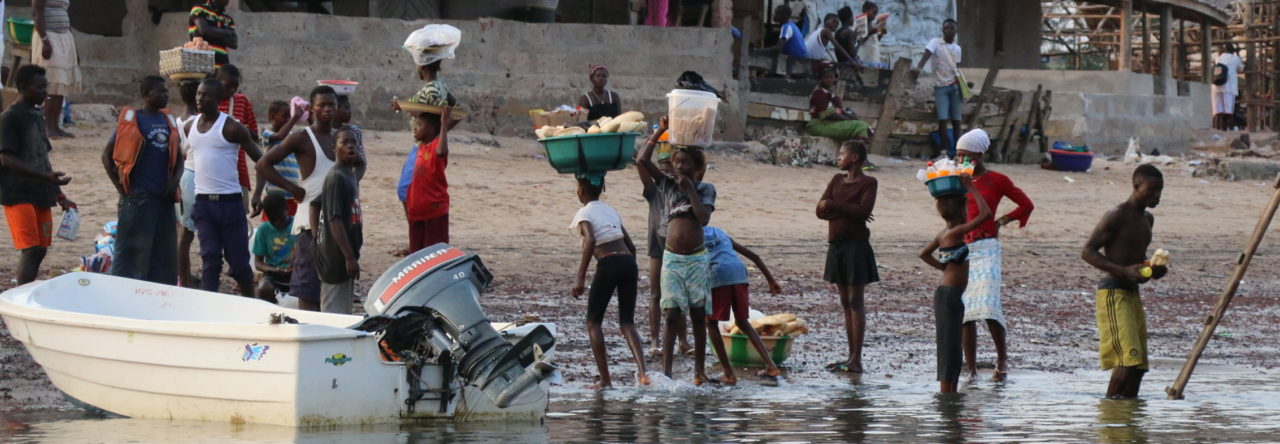
Flooding disasters in urban and suburban Dakar have been prioritised in various policy actions over the last two decades. Our research aimed to generate a historical overview of the progressive transformations of flood governance in Dakar. We found that flood governance policies have gone through three main phases, each representing a paradigm shift: the ‘emergency-relief’ phase, the ‘water-pull-out’ phase, and the ‘live-with-water’ phase. We argue that the second phase, which began in 2012, was supported by an engineering approach, where fresh water was literally pulled out using large-scale drainage infrastructure. This can be considered the ultimate stage of the conquest of urbanisation over nature. The resulting situation was a clear reduction in flood exposure, giving rise to smaller disasters. A new form of land competition also developed in the areas that were drained of water. These areas required the inclusion of local stakeholders into flood management processes. Although both the government and international partners have invested efforts in trying to coordinate flood management, the distribution of competences across several ministries and a lack of cooperation is provoking a “vertically divided authority”, leading to overlapping mandates and competition among state and non-state agencies. From 2014 onwards, what we called the ‘live-with-water’ phase supported the greater inclusion of local stakeholders and a change in articulation, which tried to consider water not as a threat but as a resource. The conclusion of this paper calls for the development of locally centred flood management bodies (including grass-root organisations and municipalities) as well as a more elaborate and complex articulation of the physical and institutional temporalities and scales of flood management.

Click here to see options of full text access
![]()

Leave a Reply
You must be logged in to post a comment.